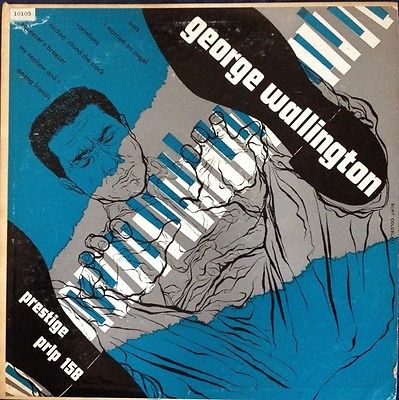Prestige was famous for not doing too many takes, but they must have really breezed through these tunes, because they got seven done in one session. Perhaps it made a difference that they're mostly Wallington originals ("I Married an Angel" is Rodgers and Hart, "Ours" is Leonard Feather), so he was familiar with the material. And it was less complicated, perhaps, with only three instruments and basically only one soloist, but good jazz is never uncomplicated.
Still, the floor belongs to Wallington here, because that's the kind of music it is--a setting for Wallington's stylish piano. No real space for Max Roach to stretch out, and Curly Russell never soloed.
And I wonder if that's part of the reason Russell's star started to fade. He would play one more session with Wallington, and a few more sessions on other labels, but by the mid-50s he was mostly gone from the jazz scene and into rhythm and blues, and then he retired from music altogether. The role of the bass was changing. Charles Mingus, of course, was in a category all his own: leader, composer, soloist. But other virtuoso bass players like Paul Chambers and Ray Brown were also changing the role of the instrument, making it more melodic, taking solo space.

Was this partly because recording techniques were changing, and the bass could be picked up better? Could be. And the mechanisms for playing music were changing, too. The long playing record made longer cuts possible, with more room for a variety of solos. And sound reproduction was better. I remember when I got my first high-fi record player, and a set of good--not great--speakers. The first album I put on was Gerry Mulligan and Chet Baker, the famous Mulligan experiment with a pianoless quartet. And I was entranced. Wow...I could hear all the instruments! I could hear what Larry Bunker and Chico Hamilton were doing, all the way through.
In this session, you actually can hear what Curly Russell is doing. Max Roach less so, but you know he's there, providing the rhythmic propulsion and complexity for Wallington's virtuoso work.
These were released on a 10-inch LP, and then on much later reissues.


No comments:
Post a Comment